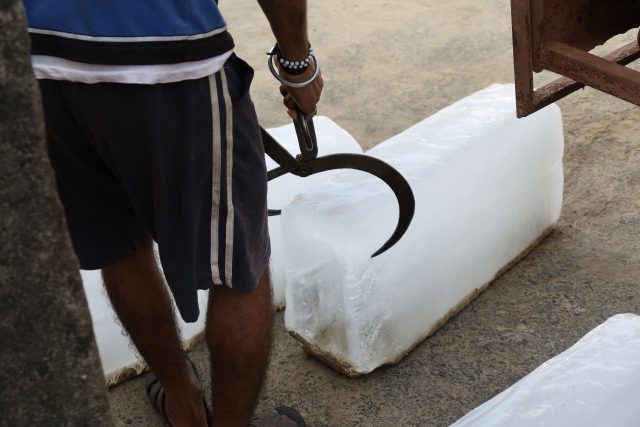This website uses cookies so that we can provide you with the best user experience possible. Cookie information is stored in your browser and performs functions such as recognising you when you return to our website and helping our team to understand which sections of the website you find most interesting and useful.
Toxic ice being used in drinks in Karachi, Pakistan, study finds
Ice from the Pakistani city of Karachi has been found to be heavily-contaminated and toxic for humans, according to a new study.

The research, which was carried out at the Karachi University (KU) Institute Environmental Studies (IES), involved a collection of 42 samples from all the six districts of Karachi.
During the analysis, the researchers alarmingly discovered that all the ice samples tested were actually contaminated with arsenic and lead and crossed the 0.01 mg/L limit set by the World Health Organisation (WHO).
Dr Aamir Alamgir, assistant professor at IES, told local news sources that this is the first detailed study on the quality of ice being commonly used in cold drinks, juices, milkshakes, ice-creams and ice lollies, among other food items and the results were highly worrying.
Alamgir said: “Higher levels of toxic metals, such as lead, arsenic and chromium, in samples clearly indicate that the water being used for making ice is contaminated with untreated industrial effluents,” explaining that chromium was widely used in industries such as glass manufacturing, electroplating, dyes and paint, tannery, chemicals and steel alloy.
Alamgir warned that “studies show that the long term use/exposure to toxic metals poses serious health risks. For instance, the use of arsenic contaminated water even in low levels might cause diabetes, lung and heart diseases, cancer and disruption in cell communication. High levels of sulphate are responsible for gastrointestinal impatience and dehydration”.
Dr Abdul Ghafoor Shoro, a senior general physician associated with Pakistan Medical Association, said: “We have been seeing a constant rise in several diseases, such as cancer, over the years. This situation seems to be linked with environmental factors, including the use of contaminated water and polluted air, as the provincial government has failed miserably to deliver and there are no regulatory quality checks on the food being sold in the market.”
Ghafoor Shoro added: “We know where all the allocated health funds go. It’s time that the government take up its basic responsibility and that is to provide clean drinking water and sanitation services to the general public”.
The findings showed that the maximum lead content (5.71 mg/L) was discovered in the sample collected from Jamia Milia, Malir. While all samples failed to meet the 2011 WHO guidelines on nickel with the highest nickel level (2.55 mg/L) being found in Muslimabad, Landhi.
As many as 21.4% samples had values greater than 1mg/L, with the maximum allowable WHO limit set for nickel being 0.07mg/L. Added to this, the value of chromium found in the ice samples fluctuated between 0.055mg/L and 0.93mg/L against the WHO recommended value of 0.050.93mg/L.
According to the study, all of the ice tested would have adverse health effects on humans and, it was warned, could reportedly lead to kidney stones, cancers and further cardiovascular diseases if left unchecked.

